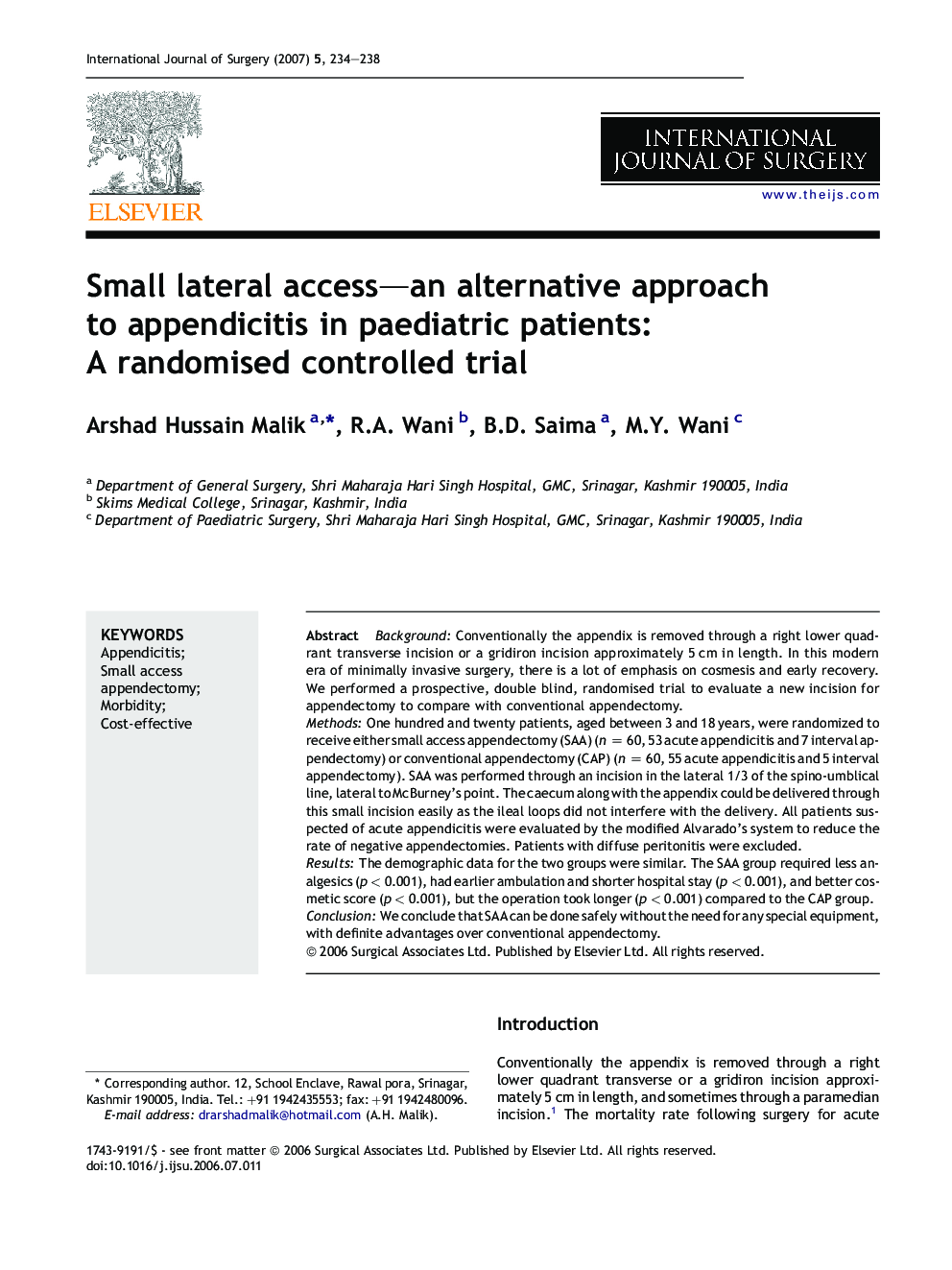| Article ID | Journal | Published Year | Pages | File Type |
|---|---|---|---|---|
| 4287838 | International Journal of Surgery | 2007 | 5 Pages |
BackgroundConventionally the appendix is removed through a right lower quadrant transverse incision or a gridiron incision approximately 5 cm in length. In this modern era of minimally invasive surgery, there is a lot of emphasis on cosmesis and early recovery. We performed a prospective, double blind, randomised trial to evaluate a new incision for appendectomy to compare with conventional appendectomy.MethodsOne hundred and twenty patients, aged between 3 and 18 years, were randomized to receive either small access appendectomy (SAA) (n = 60, 53 acute appendicitis and 7 interval appendectomy) or conventional appendectomy (CAP) (n = 60, 55 acute appendicitis and 5 interval appendectomy). SAA was performed through an incision in the lateral 1/3 of the spino-umblical line, lateral to McBurney's point. The caecum along with the appendix could be delivered through this small incision easily as the ileal loops did not interfere with the delivery. All patients suspected of acute appendicitis were evaluated by the modified Alvarado's system to reduce the rate of negative appendectomies. Patients with diffuse peritonitis were excluded.ResultsThe demographic data for the two groups were similar. The SAA group required less analgesics (p < 0.001), had earlier ambulation and shorter hospital stay (p < 0.001), and better cosmetic score (p < 0.001), but the operation took longer (p < 0.001) compared to the CAP group.ConclusionWe conclude that SAA can be done safely without the need for any special equipment, with definite advantages over conventional appendectomy.
